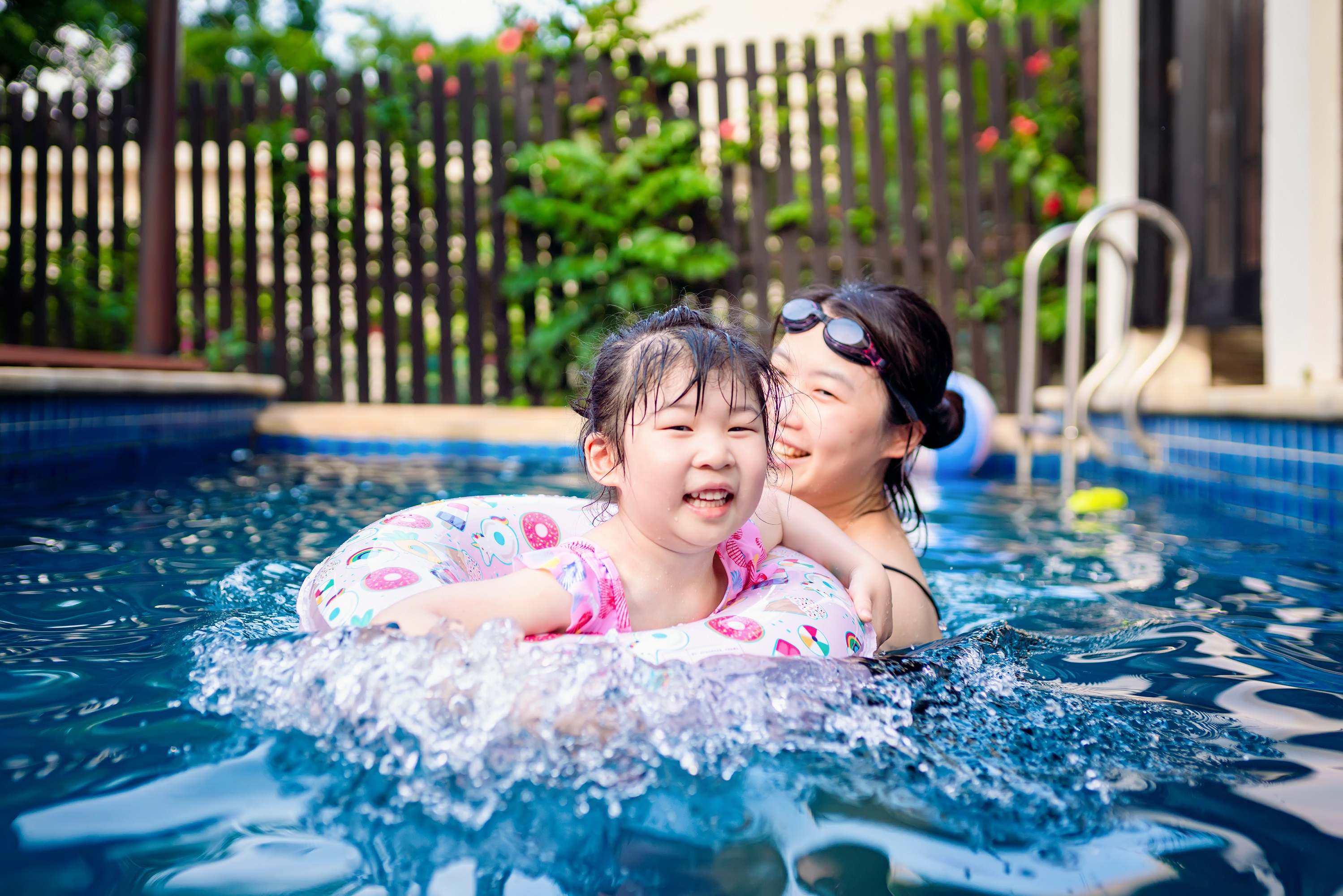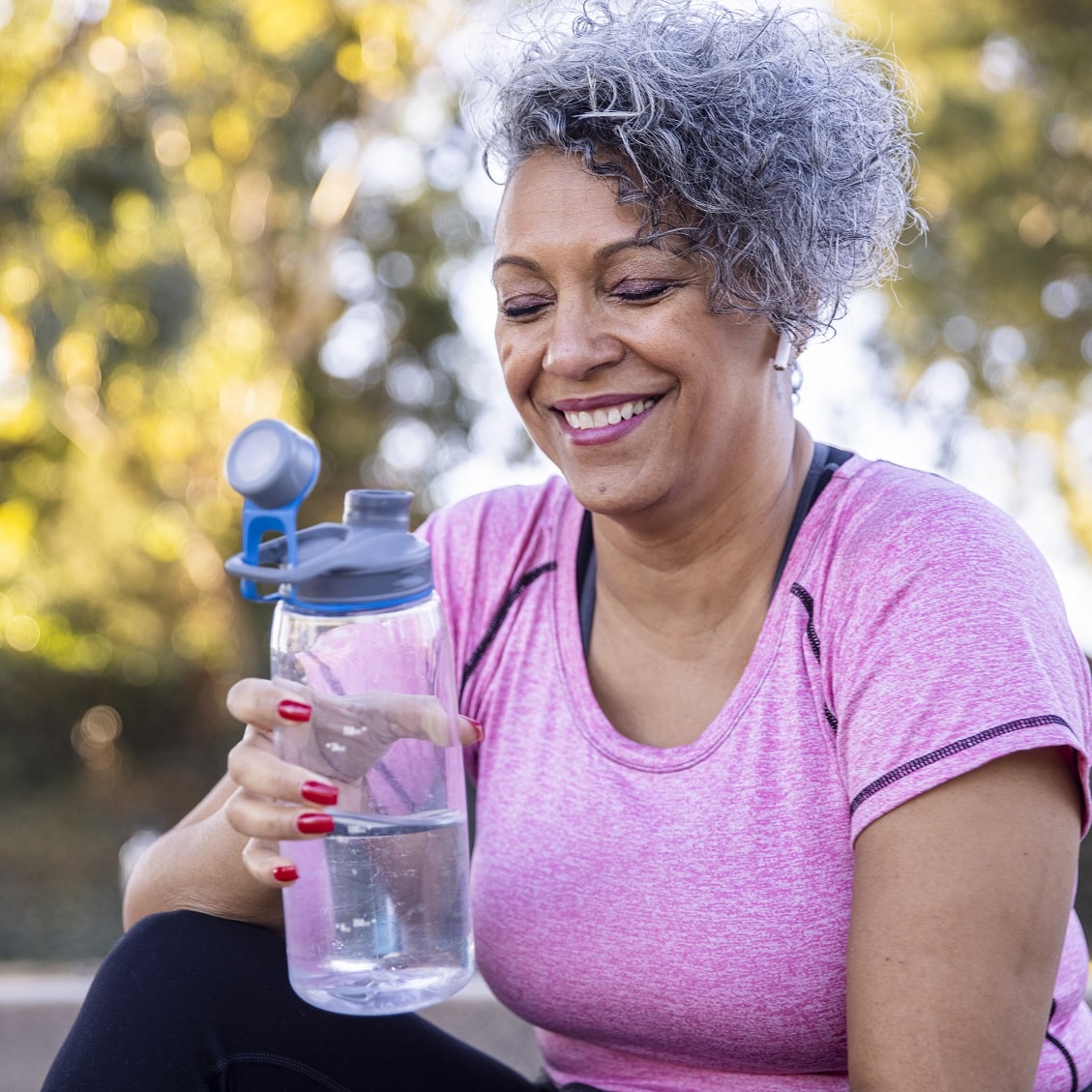6 Important Things to Know about Pool Safety

July 13, 2022
Spend enough time at the pool or beach and you may see a lifeguard save someone. A child who witnesses a rescue may think that it’s dramatic, exciting or frightening.
If your child watches a lifeguard help someone in distress, discuss water safety. Don’t scare them, but remind them about the importance of being careful.
“Explain why water safety is important, but encourage them to have fun safely,” says David M. Walker, M.D., Chief of Pediatric Emergency Medicine at the Joseph M. Sanzari Children’s Hospital at Hackensack University Medical Center. “Be sure that they respect lifeguards and only swim when adults are watching.”
Pool safety rules that every child should know
Young children who aren’t competent swimmers should stay close to trusted adults. Don’t let swim lessons give you a false sense of security for new swimmers.
Once your child is an independent swimmer, be sure that they know that:
- The deep end is only for strong swimmers. At some pools, children must pass a swim test to enter the deep end. They should be able to swim the length of the pool and tread water.
- They should never swim alone. Children should swim with a buddy, even when lifeguards are on duty. In backyard pools, a trusted adult must be actively watching the pool.
- Keep away from pool drains. Drains use suction to keep pools clean and filtered; this vacuumed force could catch hair or other body parts, causing entrapment under water.
- Children shouldn’t attempt to rescue others. When a friend or stranger is in distress, children shouldn’t jump in to save them. Instead, they should immediately alert a lifeguard or trusted adult.
- Horseplay may lead to danger. During dunking, piggyback rides or other rough play, someone may get stuck underwater. Holding someone down may keep them from breathing, or they may inhale water.
- Even strong swimmers become distressed. They may swallow water, get a foot cramp or bang their head into the wall. This is why it’s dangerous to swim without lifeguards or trusted adults.
Pool safety rules that every parent should know
Drowning is the most common cause of accidental death for children under 5. For children under 15, it’s the second-most-common cause of accidental death, after car accidents.
Here’s what all parents should know about pool safety:
- Lifeguards aren’t babysitters. Kids can silently slip under the water and drown in seconds. Parents need to avoid unnecessary distractions such as phones or conversations while actively supervising their children.
- Non-swimmers need to stay close. Get in the water with youngsters who can’t swim, and stay within arm’s length. Children may go under the surface quickly.
- Children should learn to swim. Swim lessons help children feel confident and competent in the water. Children who know how to swim are less likely to experience drowning. The American Academy of Pediatrics shares that children can benefit from swim lessons as early as one year of age - each child should be evaluated on an individual basis for their readiness.
- Ensure the pool area has proper barriers. If your child is going to a neighbor or friend’s house with a pool, make sure the pool has the proper fencing around it. Children can easily fall into a pool by accident.
- A drowning child often can’t call for help. Children in distress usually don’t shout or splash, despite stereotypical movie depictions. They often bob in an upright position, head leaning back, mouth near the surface.
- Parents can be water watchers. Take turns with other adults to watch children in the pool constantly, without distraction. Don’t read, converse or use your phone; just pay attention. Try adding a fun element to the job — the water watcher gets a lanyard, hat or sash to remind everyone they’re “on duty.”
With lifeguard shortages nationwide, it may be even more important to watch your kids in the water.
“Having parents act as water watchers is crucial at private backyard pools,” says Dr. Walker. “Share the responsibility with other trusted adults, so that you’re not overwhelmed by the responsibility.”
You can save lives by learning CPR
For the safety of adults and children, learn how to administer CPR, or cardiopulmonary resuscitation. When someone is drowning, the body is deprived of oxygen which can cause brain or organ damage, or death.
Starting CPR right away can provide vital chest compressions and rescue breaths that can revive your loved one while you await emergency care to arrive.
Next Steps & Resources:
- Meet our source: David M. Walker, M.D.
- To make an appointment with a doctor near you, call 800-822-8905 or visit our website.
The material provided through HealthU is intended to be used as general information only and should not replace the advice of your physician. Always consult your physician for individual care.
Find a doctor near me
Does Spray Sunscreen Work As Well?

Learn how spray sunscreen protects your skin. Dr. Rosenstein shares application tips for effective sun protection. Get expert advice and schedule an appointment today.
8 Truths About Drowning and ‘Dry Drowning’ Revealed

As if drowning dangers aren’t terrifying enough, parents now have compounded anxieties to cope with after recent reports of ‘dry drowning’ have shown individuals—mostly children—appearing to drown days or weeks after water exposure. Learn more.
Find a doctor near me

5 Ways to Stay Safe in Extreme Heat
Stay safe in extreme heat. Learn 5 expert tips to prevent heat illness. Get advice from Dr. Yu & others. Call 800-822-8905.

The Top 4 Summer Injuries & How to Avoid Them
Avoid common summer injuries like sunburn, heat stroke, and tick bites. Get expert tips and find nearby urgent care. Stay healthy this summer!

Simple Tips To Prevent Bug Bites
Prevent bug bites with simple tips. Avoid bites & protect your family. Learn how to reduce your risk of insect-borne illnesses. Call 800-822-8905 for an appointment.

How Much Water You Should Drink, According to a Doctor
Staying hydrated is vital to your health and wellness. Here’s how much water to consume and tips for avoiding dehydration.

